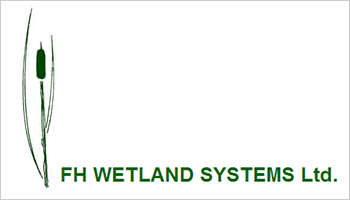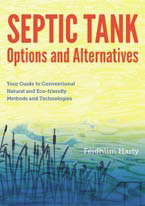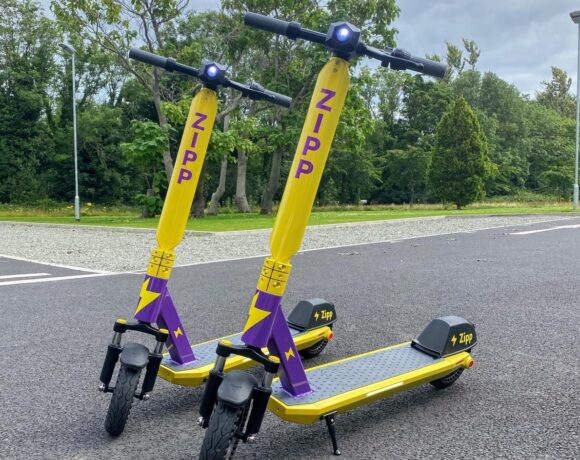An in depth interview with Féidhlim Harty from FH WETLAND SYSTEMS Ltd. The Council Journal speaks to Mr. Harty regarding his new book as well as how best to use waste as a resource…
Feidhlim, congratulations on the recent publication of your very well-received new book – Septic Tank Options and alternatives. The book has been praised for offering a comprehensive guide to a wide range of sewage treatment options for households and businesses. What general advice can you give to environmentally-conscious homeowners and business owners looking at the best possible green treatment options?
Thank you very much. No matter how small the home or large the business, there are two main environmental deciders when it comes to wastewater treatment options. firstly, how clean will the final effluent be? Secondly, what is the overall energy and resource use, in construction and in operation?
Standard mechanical treatment uses electricity to aerate the effluent for treatment. By contrast, constructed wetlands and reed beds can have zero energy use where the topography is right; i.e. where pumping isn’t necessary. Willow facilities can be carbon negative (mopping up atmospheric carbon) if the harvested coppice-wood is used as fuel to displace heating oil purchases. these can also both produce excellent water quality where correctly designed and built.
When making your decision on a new system, issues such as capital and running costs, system size vs. the space available, aesthetics and the like are additional factors in the choice of system. If your home or business is already on an urban sewer network, there are still things that you can do. Urban sewage treatment systems generally discharge to the local river or the sea after treatment. the cleaner the water entering the sewers, and the less of it, the better the final effluent quality tends to be.
So the important environmental pointers are to conserve water as far as possible to reduce the volume going to sewers, and to limit what goes down the drain. Limit or eliminate bleach use, and keep all noxious substances out of the sewers completely. these include herbicides, pesticides, paints, solvents, oils and fuels and the like.
What are some of the possibilities of using human by-products as a resource, e.g in terms of producing wetland habitats, plantations for firewood etc?
The main focus in this area has generally been towards getting dirty water clean, rather than reframing the issue as a question of resource management. there are many potential “harvests” from what we currently call sewage and sewage treatment. as you mention, wetland habitats are a potential resource for wildlife and also for aesthetic value. There is a constructed wetland in arcata, California that treats the sewage from the town. apparently the maintenance person on-site spends a lot of time renting out binoculars to visitors who come from all over for the birdlife, providing considerable revenue for the town. Firewood is another easy harvest from sewage treatment systems.
Zero discharge willow facilities were developed in Denmark in the mid 1990s and have been used in many counties in Ireland over the past 8 years or so. These are pump fed with septic tank effluent and absorb all nitrates, phosphates and effluent volume. Recent trials have highlighted changes needed in design and construction, making the newer systems more adapted to Irish conditions.
One of the invaluable features of these systems is that in carbon balance terms if the willow is used for fuel, a single domestic-scale facility will mop up about the same amount of atmospheric carbon over 20 years that a mechanical treatment system will generate in that time in electricity use. Larger scale willow plantations are also in use, and provide an obvious source of electricity. Bord na Mona already co-fire with 30% willows at their edenderry plant in Co. Offaly. By combining fuel growing with sewage treatment we can turn the major challenges of carbon emissions and water pollution into a synergistic solution.
The other fairly obvious harvest from the toilets of the country is the nutrient rich material we fl ush away every day. far from being a step backwards, humanure composting and urine diversion are a very effective way to convert one of the main water pollutants in the country into a safe and productive soil enricher and fertiliser.
Dry toilets are an obvious way to achieve this, but on a larger scale.Scandinavia has been at the forefront of developing faecal separators for use with fl ush toilet infrastructure so that solids are collected and contained for composting, while fl ush water is diverted for treatment. New standard looking toilets divert urine within the toilet bowl and route it to separate storage for reuse as a well balanced N,P,K fertiliser.
With phosphate fertiliser mined from limited reserves and nitrates generated using fossil fuel, reusing humanure and urine is an obvious way to limit our ongoing contribution to climate change and also avoid over-enrichment of watercourses and groundwater from nutrient-rich effluent discharges.
With mandatory inspections having been introduced in 2013, what should homeowners do to ensure their existing (and possibly aging) septic tank systems meet all relevant guidelines?
As the inspection process is currently structured, homeowners can avail of a grant if their system is found wanting. By contrast if they want to upgrade their system voluntarily, then planning permission and investment are both needed. Problems such as ponding or surface water pollution are most noticeable on existing sites that wouldn’t pass the current guidelines for percolation anyway, even with a good degree of treatment beforehand.
Consequently it’s diffi cult to suggest exactly what homeowners should do to pass an inspection before the event. There has recently been an ePa consultation process surrounding these issues, so hopefully we’ll have an easier planning process around voluntary upgrades. this will help homeowners take proactive steps in the right direction. that said, where there are obvious signs of pollution, then it’s important that it isn’t allowed to continue.
Regardless of grants or planning permissions, there is both a legal and moral duty to not cause water pollution. In these instances, talk with a site assessor or environmental consultant about the options available. My book was written with this question in mind, and covers conventional, natural and eco-friendly options available, so if you’re in doubt about how best to proceed it is one place to start.
What in your opinion can councils and local government do to make it easier for environmentally-friendly businesses to operate?
I’m hopeful that the next phase of the national septic tank inspection plan will make upgrading sewage treatment systems a matter for direct agreement with the local authority environment section rather than a full planning permission process. a lot of the infrastructure is already in place at present. generally separation and recycling of solid waste streams is facilitated and encouraged. There’s active pressure on businesses to have high quality effl uent discharges. rising fuel and energy costs are pushing everyone towards conservation for cost reasons if not climate. The decision to behave in an environmentally sustainable manner rests to a great extent with the business rather than local government.
However there are some obvious areas where this is not the case. It can be quite challenging to get planning permission to use innovative forms of sewage management such as composting and urine diversion. The EPA Code of Practice is a valuable document for suitable sites, but can restrict the use of more sustainable methods if followed too rigidly. Willows are a case in point. ecologically and financially we could be ploughing funding into community plantations whereby local councils plant commercial biomass crops on land down-gradient of their sewage treatment plants to make use of residual N and P rather than allowing enrichment of our rivers and at the same time importing fossil fuels for power and heat.
From a climate change perspective, we need to leave c.80% of known fossil fuel reserves in the ground if we are to meet targets already agreed by countries around the world. this won’t be possible if we continually grant planning permission to energy heavy activities. An easy solution in this context is for sewage treatment technologies to be at least carbon neutral, if not carbon negative. this is something that could be achieved in Ireland at the stroke of a pen. Even for conventional systems, the use of willow plantations for nutrient uptake after municipal treatment could move Ireland more towards zero carbon almost overnight. given that the global indicators of environmental health have dipped so seriously low, it’s not so much a question of facilitating ecofriendly businesses, although that is important. It’s becoming a question of making more radical changes in all aspects of business and local government, and prioritising environmental decisions.
What are some of the latest developments in your area of expertise and what do you hope the future holds for your company, FH Wetlands Ltd?
When I started out in business in 1996, my aim at the time was to highlight the cost, wildlife and water quality benefi ts of constructed wetland systems. I couldn’t see why every cash-strapped local authority in the country couldn’t use them to get every river and stream in Ireland clean. Since then, many counties have at least one municipal constructed wetland system working away quietly and unobtrusively, providing free treatment and habitat for local wildlife to boot.
With the publication of the EPA Code of Practice and greater environmental enforcement in the area of business effl uents over the years, wetlands, reed beds, willow systems and other innovative solutions have all become much more commonplace. Yet there is so much work that still needs to be done. I’m very heartened by Swedish developments in source separation technologies, by ongoing Danish work on willow systems and the work on dry toilet technology in Sweden and Finland particularly.
Many ecologically minded clients are planning and installing these different technologies in their new projects and I find that very encouraging and exciting. twenty years ago, my naive plan was to get all of the water in the country clean and then take a holiday! As you can see, I’m not quite there yet… On the plus side there are new exciting projects unfolding every week, and increasingly these are being embraced by local authorities who are hungry for genuine solutions. In this vein, I’ve been running seminars for engineers, architects and local authorities around Ireland on how to apply environmentally sustainable solutions in their work. It’s been very fulfilling to work alongside people willing to seek new solutions.
Finally, on a different subject, what advice do you have for those who want to conserve their water supply and therefore limit wastage as much as possible?
Water charging is probably the single most important step that we have taken towards encouraging greater water conservation. that said, I have concerns over the potential for privatisation of Irish Water, a move that has been reversed in other eu countries, but that is another debate. Personally I’d be a lot happier if our water was still managed by each separate local authority. With charging, savings on an individual home and business level are now immediately tangible. But on a national scale, if all homes and businesses in Dublin adopted even a modest water saving programme, it’s likely that the plans to pipe Shannon water to the capital could be cancelled, with savings both financial and ecological.
In terms of reducing water meter readings, we’re blessed in Ireland with an abundance of rainfall, spread fairly evenly throughout the year. Using some of that in our homes and businesses is a fairly easy measure. On a very basic level we can use rainwater for garden and yard use. One step beyond that is using it for toilet fl ushing, or screen fi ltering it for washing machines. Full rainharvesting systems are now readily available for all potable supply, but add up the costs and savings before committing to the project.
To conserve overall water use there are special tap fittings, low flush toilets, low water dish washers, low delivery shower heads and other saving equipment. these all help to reduce use without any change in lifestyle. Naturally, by taking a bit more care with simple tasks like turning off the tap while brushing teeth and having short showers rather than baths, water savings can become distinctly pronounced. This is all before ever you fix that leaky tap or pipe. If you want more ideas on water conservation, look up any local authority website or wetlandsystems.ie/watertips.html. Council websites in arid climates such as australia are usually very imaginative if you want more ideas.
FH WETLAND SYSTEMS Ltd.
CONTACT:
Féidhlim Harty
Tel: 065 6797355
email: [email protected]
Web: www.wetlandsystems.ie
30 Woodlawn,
Lahinch rd., ennis,
Co. Clare.














